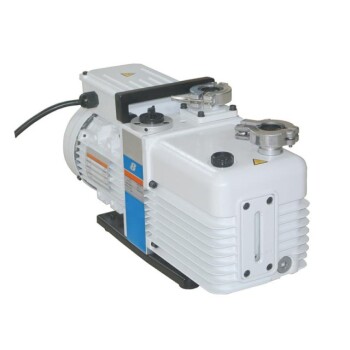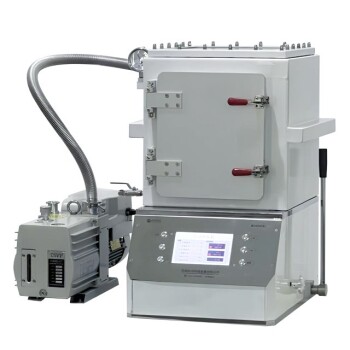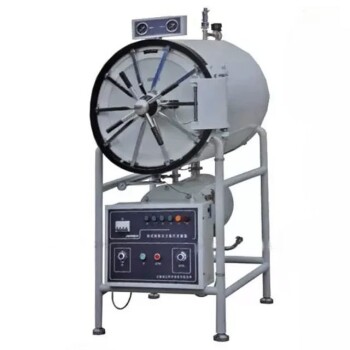Cleaning a rotary evaporator (rotavap) is a critical process to ensure its proper functioning, longevity, and to avoid contamination. The process involves disassembling the unit, cleaning each component separately with appropriate solvents or cleaning agents, and ensuring proper drying before reassembly. Special attention is given to the condenser, which may require soaking in acids to remove algae buildup. Safety protocols, including adequate cooling, proper ventilation, and handling of chemicals, must be followed. Additionally, periodic maintenance and adherence to manufacturer guidelines are essential for optimal performance.
Key Points Explained:

-
Preparation Before Cleaning:
- Ensure the rotavap is turned off and adequately cooled to avoid burns or damage.
- Depressurize the system and disconnect the glassware carefully to prevent spills or accidents.
- Remove any coolant from the condenser and allow it to reach room temperature.
- Properly dispose of or store the collected distillate according to regulations.
-
Disassembly of the Rotavap:
- Dismantle the rotavap into its removable parts, including:
- Evaporation flask
- Condenser
- Collection flask
- Vapor tube
- Handle glassware carefully to avoid breakage or injury.
- Dismantle the rotavap into its removable parts, including:
-
Cleaning Individual Components:
-
General Cleaning:
- Flush each part with an appropriate solvent (e.g., acetone, ethanol) to remove residues.
- Use a brush for stubborn residues, ensuring thorough cleaning without scratching the glassware.
-
Condenser Cleaning:
- Soak the condenser in nitric acid or hydrochloric acid for a few hours to remove algae or mineral deposits.
- Rinse thoroughly with water to remove all traces of acid.
- Follow safety protocols when handling acids, including wearing gloves and working in a well-ventilated area.
-
Avoid Quick Cleaning Methods:
- Do not use acetone directly in the pump, as it can damage the pump seals and components.
-
General Cleaning:
-
Drying and Reassembly:
- Allow all cleaned components to air dry completely before reassembly to prevent moisture-related issues.
- Inspect glassware for cracks or damage and replace any faulty parts.
- Reassemble the rotavap carefully, ensuring all connections are secure.
-
Sterilization (if required):
- For applications requiring sterile conditions, autoclave the glassware after cleaning.
- Follow the manufacturer’s guidelines for autoclaving to avoid damaging the equipment.
-
Periodic Maintenance:
- Clean the rotavap before and after each use to prevent contamination and ensure consistent performance.
- Avoid leaving water in the bath, as it can lead to corrosion or microbial growth.
- Regularly check and replace worn-out parts, such as seals or gaskets, to maintain efficiency.
- Avoid setting the rotation speed too high, as it can cause excessive wear and tear.
-
Safety Considerations:
- Always work in a well-ventilated area when using solvents or acids.
- Wear appropriate personal protective equipment (PPE), including gloves, goggles, and lab coats.
- Dispose of cleaning solvents and chemical waste according to local regulations.
-
Technological Advancements:
- Stay updated on advancements in rotavap technology, such as improved materials or designs, which may simplify cleaning and maintenance.
By following these steps and best practices, you can ensure the rotavap remains in optimal condition, providing reliable performance for your laboratory or extraction processes.
Summary Table:
| Step | Key Actions |
|---|---|
| Preparation | Turn off and cool the rotavap, depressurize, and disconnect glassware safely. |
| Disassembly | Dismantle into parts: evaporation flask, condenser, collection flask, vapor tube. |
| Cleaning | Use solvents (e.g., acetone, ethanol) for general cleaning; soak condenser in acid. |
| Drying & Reassembly | Air dry components, inspect for damage, and reassemble securely. |
| Sterilization | Autoclave glassware if sterile conditions are required. |
| Maintenance | Clean before/after use, replace worn parts, and avoid high rotation speeds. |
| Safety | Use PPE, work in ventilated areas, and dispose of chemicals properly. |
Need expert advice on maintaining your rotary evaporator? Contact us today for personalized guidance!



